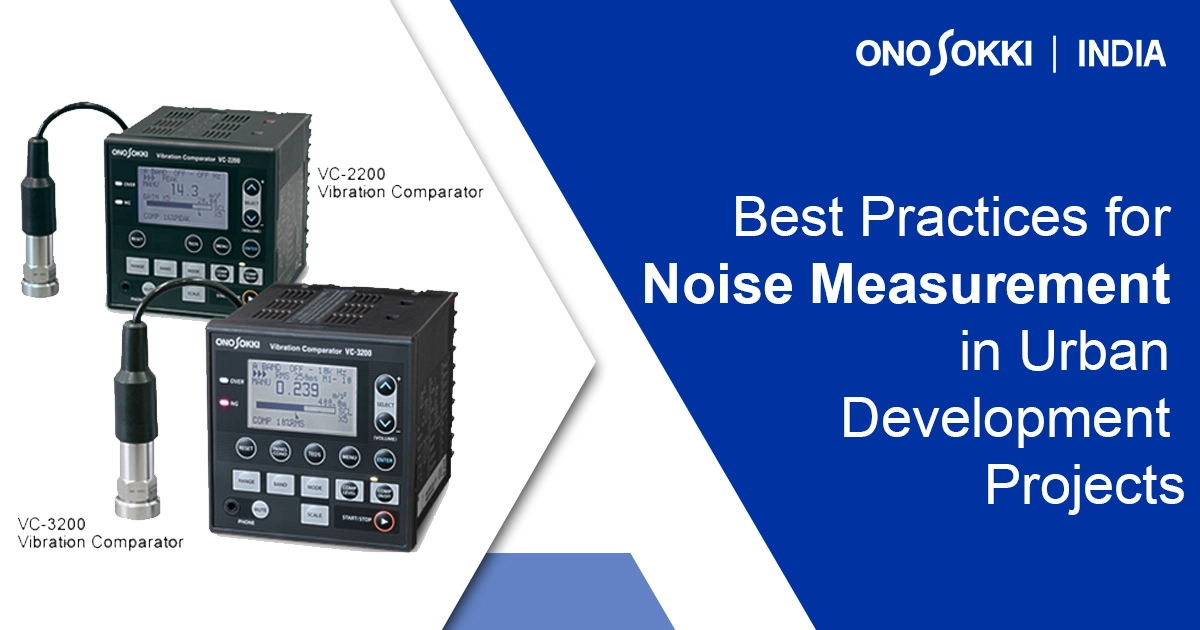



Urban development brings progress—but it also brings noise. As cities grow, construction projects become a constant part of the landscape. And while cranes, drills, and bulldozers are signs of economic development, they’re also major contributors to urban noise pollution.
For project developers and city planners, managing that noise isn’t just a regulatory checkbox—it’s part of doing responsible, community-conscious work. In this article, we’ll break down practical, real-world strategies for measuring and managing noise in city environments. We’ll also talk about how to stay compliant with city noise level regulations and how the right construction noise meter can make your job a whole lot easier.
Why Noise Control Matters More Than Ever
In a city, noise is part of everyday life. But when it crosses a certain threshold, it can become more than an inconvenience. Loud, unrelenting noise—especially from construction—can have serious effects on people’s health and well-being. It disrupts sleep, raises stress levels, and can even affect heart health over time.
That’s why urban noise monitoring has become a critical part of infrastructure planning. Cities are no longer treating noise as just an “annoyance issue.” It’s now seen as a public health concern—and it’s regulated accordingly. If a project doesn’t meet these standards, developers can face penalties, delays, or backlash from the community.
Before breaking ground, it’s important to understand the sound environment you’re stepping into. This is where a baseline noise assessment comes in.
In simple terms, it’s about measuring the existing sound levels in and around your site before construction begins. Are you near a school or a hospital? Is the area already noisy due to traffic or industry? Or is it mostly quiet and residential?
Establishing this baseline helps you:
It’s a crucial first step that gives context to every other decision you’ll make around noise management.
Not all cities enforce the same rules, and in some cases, regulations can vary from one neighborhood to another. That’s why it’s important to be familiar with city noise level regulations in your specific location.
Most urban areas have set allowable decibel limits for different times of day—usually stricter at night—and for different types of zones. For example, what’s considered acceptable near a highway might be completely out of bounds near a residential street.
Make sure your team knows:
Staying informed on these rules helps prevent costly violations and keeps your relationship with the city smooth and professional.
Measuring noise accurately isn’t something you can do with just any device. A reliable construction noise meter is a must-have for any serious urban project.
Look for meters that are certified (Class 1 or Class 2, according to IEC standards) and can log data over time. The best models allow you to download reports, track changes, and even pinpoint noise levels at specific locations using GPS.
For outdoor and long-term use, make sure your device is:
Some advanced systems can send alerts if noise exceeds a certain threshold, helping teams respond before complaints roll in.
Instead of taking occasional readings, many developers now use permanent monitoring stations around their sites. These units track noise in real time and provide a continuous stream of data.
Why it matters:
Having this level of transparency can go a long way in earning trust and staying ahead of potential issues.
Sometimes, it’s not about how loud something is—it’s about when it happens. For example, a 75-decibel noise might be fine at 11 a.m. on a weekday, but it could spark complaints if it happens early on a Sunday morning.
Plan your work schedule with these considerations in mind:
These changes often cost nothing but make a huge difference in how a project is received by the community.
Even if you plan well and follow all the rules, there may still be times when your work generates more noise than expected. That’s where physical noise reduction methods come in.
Some of the most effective solutions include:
These tools not only reduce noise but also demonstrate your commitment to responsible construction practices.
One of the simplest—and often most overlooked—ways to reduce noise complaints is to communicate openly with the people around your project.
When residents or local businesses feel like they’re being kept in the dark, even moderate noise can trigger frustration. But if you’re upfront about what’s happening and why, you’ll often get more patience and support.
Some good practices:
Taking this proactive approach can prevent a lot of friction later on.
Lastly, make sure you’re keeping solid records of your noise monitoring efforts. This includes:
Having this data organized and accessible helps with compliance, reporting, and maintaining credibility with all stakeholders.
Noise is part of urban life—but it doesn’t have to be unmanaged or disruptive. With the right strategy, tools, and attitude, you can keep your project moving forward without becoming a source of stress for the surrounding community.
By investing in proper urban noise monitoring, selecting the right construction noise meters, and aligning with city noise level regulations, developers can build smarter, more respectful, and ultimately more successful projects.
Good development isn’t just about buildings—it’s also about balance. And managing noise is one of the best ways to keep that balance in check.